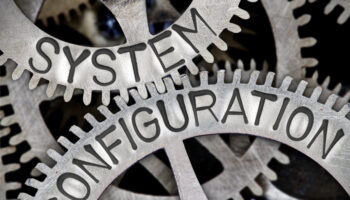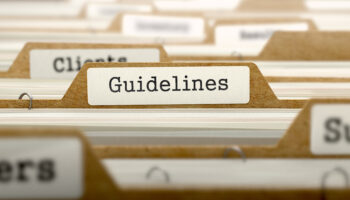By: Jill Bella
When we are not feeling well, we usually assess the situation informally. We identify our symptoms (e.g., sore throat, stuffy nose, head ache, achy stomach), reflect back on when we started to feel bad in order to predict possible causes (e.g., close proximity to sick co-worker, forgot to wash hands, allergies, ate bad food), we estimate how long we have been ailing (e.g., one day, one week), and decide what steps to take to treat the issue (e.g., rest, medicine, cold pack). In some cases, our analysis and solution are spot on and we are able to remedy the situation. The informal assessment saves us time and money. Read more
Self-assessments are an informal method of gathering data to provide important information leading to improvement. While a formal assessment will provide you with more information and will most likely be more specific and accurate, self-assessments are still very helpful and can result in significant improvements. If you are considering conducting a self-assessment using a tool, such as the Program Administration Scale (PAS), the following tips will help you get started.
- Identify the purpose of the self-assessment. You may be interested in conducting a self-assessment for many reasons. Perhaps you want to do a self-assessment simply to gather ideas about what is currently happening and what can be improved. Alternatively, you may have a more specific reason for conducting a self-assessment, such as dealing with a challenge and using self-assessment to try to drill-down to the cause or identify possible ways to address the challenge. Other reasons you may do a self-assessment may be to gather new ideas, or to prepare for a formal assessment conducted by another person. Identifying the purpose of the self-assessment allows you to plan your time better, decide who should be involved, set expectations, and determine what you will do with the information. Reflecting on what you want to achieve before you get started also helps you become more open to the feedback or information you might gain in the process.
- Read the instructions. Sounds simple enough, yet there are many people (you may be one of them) who often jump right in to fix something without so much as glancing at the directions. While this may work for putting together furniture, when it comes to your organization’s health it is a risky proposition. Assessment tools have guidelines for how they are administered. If an assessment has several components to it like the PAS, there may be a specific or recommended order in which to complete each component. The instructions may also define terminology which will guide your ratings. In the PAS, for example there is a Glossary of Terms. The instructions may also provide you with more detail about what is being measured and how to measure it. In the PAS, the subscales are explained in the beginning of the tool. In addition, the instructions may include information on how to view the results. The PAS includes an Item Summary Page that can be used to write in item scores and determine the average PAS item score. The PAS also includes a PAS Profile, where items scores can be plotted to provide you with a visual representation of item and subscale scores in addition to including an average (overall) PAS item score.
- Learn how the instrument is scored. Most tools, including the PAS, contain instructions for how to score the instrument within the tool itself. In addition, you may be able to find instructions and practice opportunities online. Knowing how to score is important. It can provide insight into what areas make sense for you to work on. For example, if you know how to score the PAS you can determine if it will take changes to many administrative practices to improve an item score or if it will only take a few changes to do so.
- Receive training. There is often training provided on how to use assessment tools. Attending such training will provide you with new insight into how to conduct the assessment as well as how to use the information in different ways. As with the PAS, there may be different levels of training available. For example, there may be an overview training which is designed to provide you with basic information on what the tool measures. There may be a lengthier training that provides you with more specifics on how to use the tool to improve your practice. And there may be even more in-depth training that is designed for those who will be conducting formal assessments and need to achieve reliability in administering the tool. Reliability trainings tend to include practice assessments and reliability testing on the tool. There may also be professional learning opportunities that provide a more in depth look at a specific item of an assessment tool. If you seek training to learn more about a given tool, make sure the training is designed to meet your needs and is being conducted by an expert on the tool.
- Review the content. Using the PAS as an example, simply flipping through the pages will provide you with ideas about what best practices are currently in place and what you could be doing better in the future. You will most likely gain new perspectives on the topic areas that are covered and discover new methods of practice. For example, in Item 2 in the PAS, Supervision and Performance Appraisal, indicator 7.2 states “the performance appraisal process includes multiple sources of evidence (e.g., artifacts, parent feedback, co-worker feedback).” Perhaps you do a performance appraisal for staff in your program, but never thought of including artifacts in the process such as a teacher portfolio. Or, maybe you had not thought of using feedback from others (e.g., co-teacher or families) as a measure of performance. By reading through the tool, you were able to reflect on your practices and consider new options. Assessments tools such as the PAS may indicate practices on a continuum of quality so you can see what minimal, good, and excellent practices are, giving you a sense of where your program is now and where it could be in the future.
- Note the distinction between informal and formal assessment. When a tool has been proven to be reliable and valid there has been research conducted on the validity of the constructs being measured as well as on the reliability of its administration. Note that you are more likely to give yourself higher ratings when doing a self-assessment than you would receive from a certified assessor, or someone who has been trained to reliability, who conducts a formal assessment. Reliable assessors receive training on how each statement in a tool should be understood to be consistent with the intent of the author(s) and with other reliable assessors. Assessors learn the definition of terms and rules to use. And, to be reliable with the authors, assessors are also tested on their knowledge of the tools. Regardless of if you give yourself a higher rating than a certified assessor would, a self-assessment still provides you with valuable information and ideas that will help you to develop an improvement plan. A self-assessment can be a wonderful way to gather information to assist in improving the quality of your program. It can also be the first step to prepare for a formal assessment by a certified reliable assessor.
The PAS is designed to identify areas where your program is already doing well, along with areas for improvement. After conducting a self-assessment, you can decide where to put your time and effort. Reflect on your results and think critically about the areas or items where you want to make changes. You may have an interest or be motivated in a certain area and decide to start there. You may decide to work on a few “easy fixes.” You may decide to tackle a more complex challenge. Keep in mind that you can improve a program’s overall PAS score just as much by increasing one item score from a 4 to a 6 as you can from increasing another item score from a 1 to a 3. Whatever direction you take, in self-assessment the choice is yours.
References
Talan, T. & Bloom, P., J. (2011). Program Administration Scale (2nd ed.). New York, NY: Teachers College Press.
Jill Bella, Ed.D., is Director of Professional Learning for the McCormick Center for Early Childhood Leadership and Assistant Professor of Early Childhood Education at National Louis University (NLU). In these roles, she oversees professional learning, conducts research, and consults for local and state initiatives on the Early Childhood Work Environment Survey (ECWES), the Program Administration Scale (PAS), the Business Administration Scale for Family Child Care (BAS), and leadership topics in early care and education. Dr. Bella is also the co-author of several books and trainer’s guides including A Great Place to Work, Inspiring Peak Performance, and Building on Whole Leadership.




